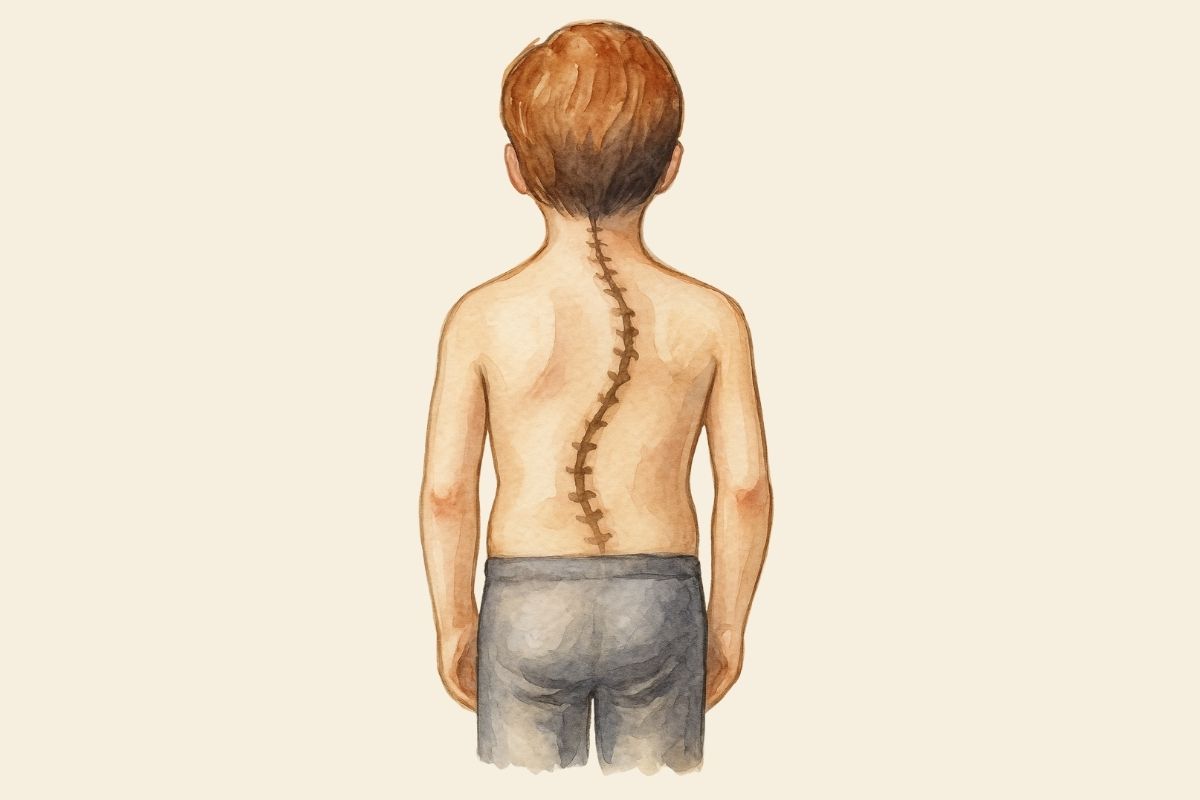Scoliosis
Scoliosis is a three-dimensional spinal deformity in which the spine bends to the right or left and rotates around its axis at the same time. It is one of the most common skeletal problems in childhood and adolescence. Scoliosis usually does not cause any significant complaints; however, as it progresses, symptoms such as poor posture, shoulder-asymmetry, low back pain, breathing difficulties and constipation may develop.
Although the most common form of scoliosis is idiopathic (of unknown cause), congenital musculoskeletal anomalies, neuromuscular diseases and connective tissue disorders can also cause scoliosis. Early diagnosis is critical to prevent scoliosis from progressing and causing severe deformities.
Diagnosis usually starts with a physical examination, followed by scoliosis radiographs to measure the angle of curvature (Cobb angle). Mild curvatures up to 20 degrees can usually be controlled with regular follow-up and exercise. While the use of a corset is recommended for moderate curvatures, surgical treatment is considered for curvatures over 40 degrees. At this point, it is of great importance that all children between the ages of 4-6 and 11-13 undergo a spinal examination.
The goal in scoliosis is to maintain the balance of the spine and to ensure that the child leads an aesthetically and functionally healthy life.
